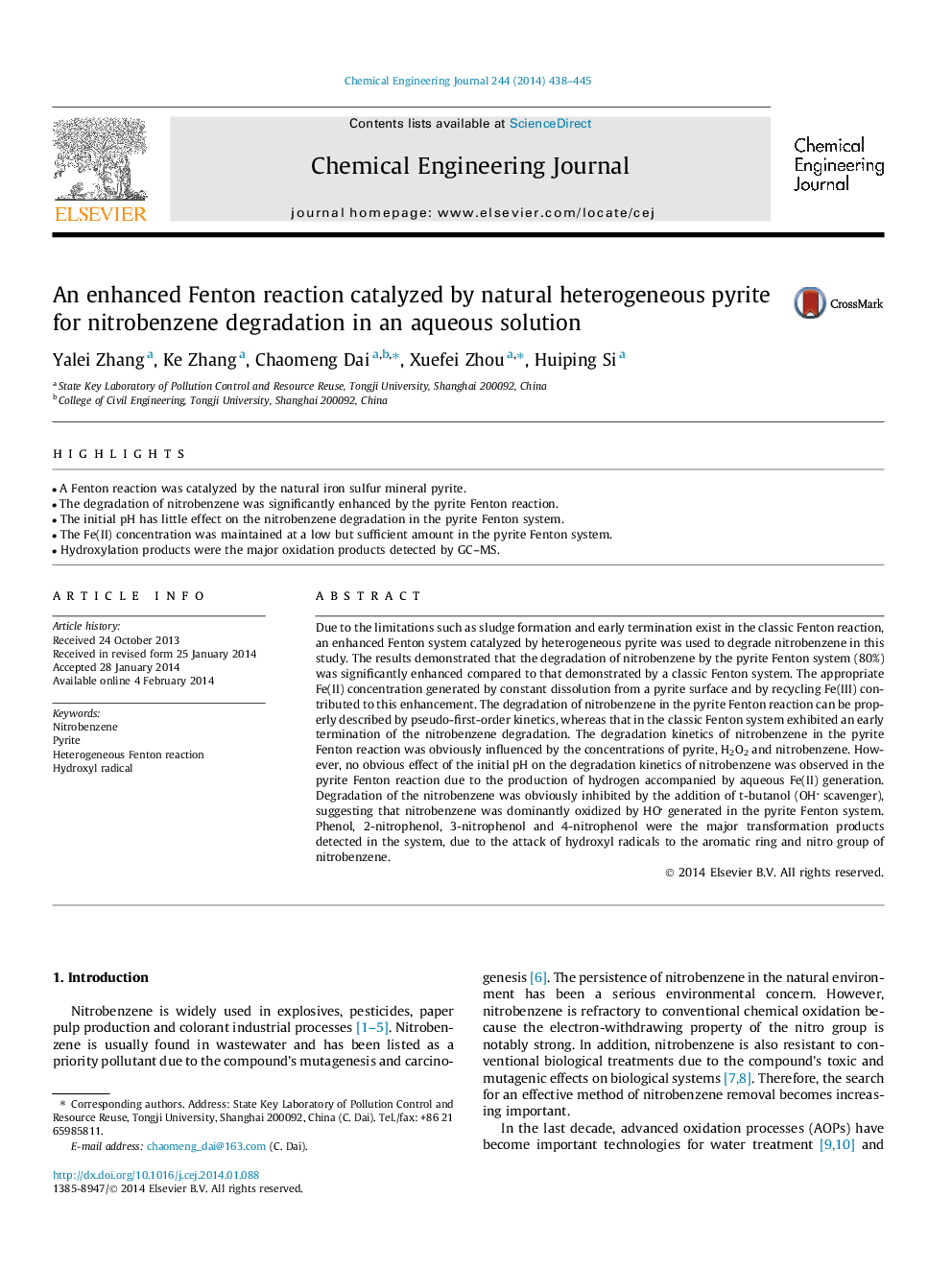| کد مقاله | کد نشریه | سال انتشار | مقاله انگلیسی | نسخه تمام متن |
|---|---|---|---|---|
| 147777 | 456399 | 2014 | 8 صفحه PDF | دانلود رایگان |
• A Fenton reaction was catalyzed by the natural iron sulfur mineral pyrite.
• The degradation of nitrobenzene was significantly enhanced by the pyrite Fenton reaction.
• The initial pH has little effect on the nitrobenzene degradation in the pyrite Fenton system.
• The Fe(II) concentration was maintained at a low but sufficient amount in the pyrite Fenton system.
• Hydroxylation products were the major oxidation products detected by GC–MS.
Due to the limitations such as sludge formation and early termination exist in the classic Fenton reaction, an enhanced Fenton system catalyzed by heterogeneous pyrite was used to degrade nitrobenzene in this study. The results demonstrated that the degradation of nitrobenzene by the pyrite Fenton system (80%) was significantly enhanced compared to that demonstrated by a classic Fenton system. The appropriate Fe(II) concentration generated by constant dissolution from a pyrite surface and by recycling Fe(III) contributed to this enhancement. The degradation of nitrobenzene in the pyrite Fenton reaction can be properly described by pseudo-first-order kinetics, whereas that in the classic Fenton system exhibited an early termination of the nitrobenzene degradation. The degradation kinetics of nitrobenzene in the pyrite Fenton reaction was obviously influenced by the concentrations of pyrite, H2O2 and nitrobenzene. However, no obvious effect of the initial pH on the degradation kinetics of nitrobenzene was observed in the pyrite Fenton reaction due to the production of hydrogen accompanied by aqueous Fe(II) generation. Degradation of the nitrobenzene was obviously inhibited by the addition of t-butanol (OH scavenger), suggesting that nitrobenzene was dominantly oxidized by HO generated in the pyrite Fenton system. Phenol, 2-nitrophenol, 3-nitrophenol and 4-nitrophenol were the major transformation products detected in the system, due to the attack of hydroxyl radicals to the aromatic ring and nitro group of nitrobenzene.
Journal: Chemical Engineering Journal - Volume 244, 15 May 2014, Pages 438–445
